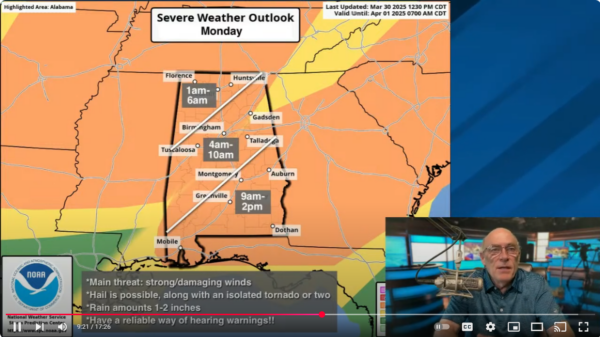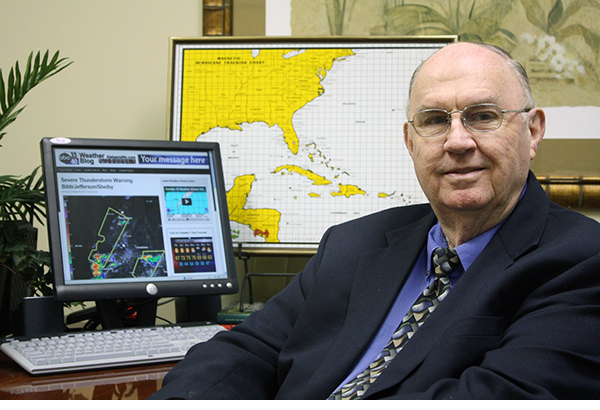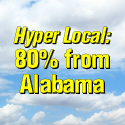James’ Special Sunday Evening Video Briefing
James provided a detailed evening briefing earlier this evening on the potential for severe storms affecting Alabama overnight and into Monday morning. The primary concern is a squall line expected to enter northwest Alabama after midnight, bringing the risk of damaging straight-line winds and isolated tornadoes. James emphasized that while widespread tornado activity is not expected, the potential for brief, spin-up tornadoes remains, especially in areas northwest of the state. The greatest threat appears to be strong winds capable of knocking down trees and power lines, with potential power outages likely during the early morning hours.
As of late afternoon, the weather remained calm across most of Alabama, aside from heavy rainfall and flooding in Baldwin County and Escambia County, Florida. Flash flood warnings were active for that region, with some areas receiving over three inches of rain. Elsewhere in the state, conditions were relatively quiet, although a severe weather system was developing to the northwest, spanning Arkansas to the Great Lakes. This system will drive the squall line into Alabama during the early morning hours Monday.
Timing is key with this system. Spann broke down the expected arrival of storms by region: from 1–6 a.m. for the Tennessee Valley and northwest Alabama, 4–10 a.m. for central parts including Birmingham, Montgomery, and Tuscaloosa, and 9 a.m.–2 p.m. for southeastern Alabama. While instability will be moderate early in the day, weak wind shear will likely limit the tornado potential. However, Spann urged residents—especially those in manufactured homes or surrounded by trees—to take severe thunderstorm warnings seriously, as strong winds can be just as dangerous as tornadoes in certain settings.
Looking ahead, Spann noted a dramatic warm-up is expected later in the week, with highs reaching the upper 80s, possibly brushing record levels. However, a sharp cooldown is also in the forecast by April 7–9, with temperatures dipping into the 30s across parts of the state. He reminded viewers not to plant frost-sensitive vegetation until after April 15, a consistent lesson from Alabama’s rollercoaster spring climate.
Category: Alabama's Weather, ALL POSTS, Severe Weather, Social Media
















